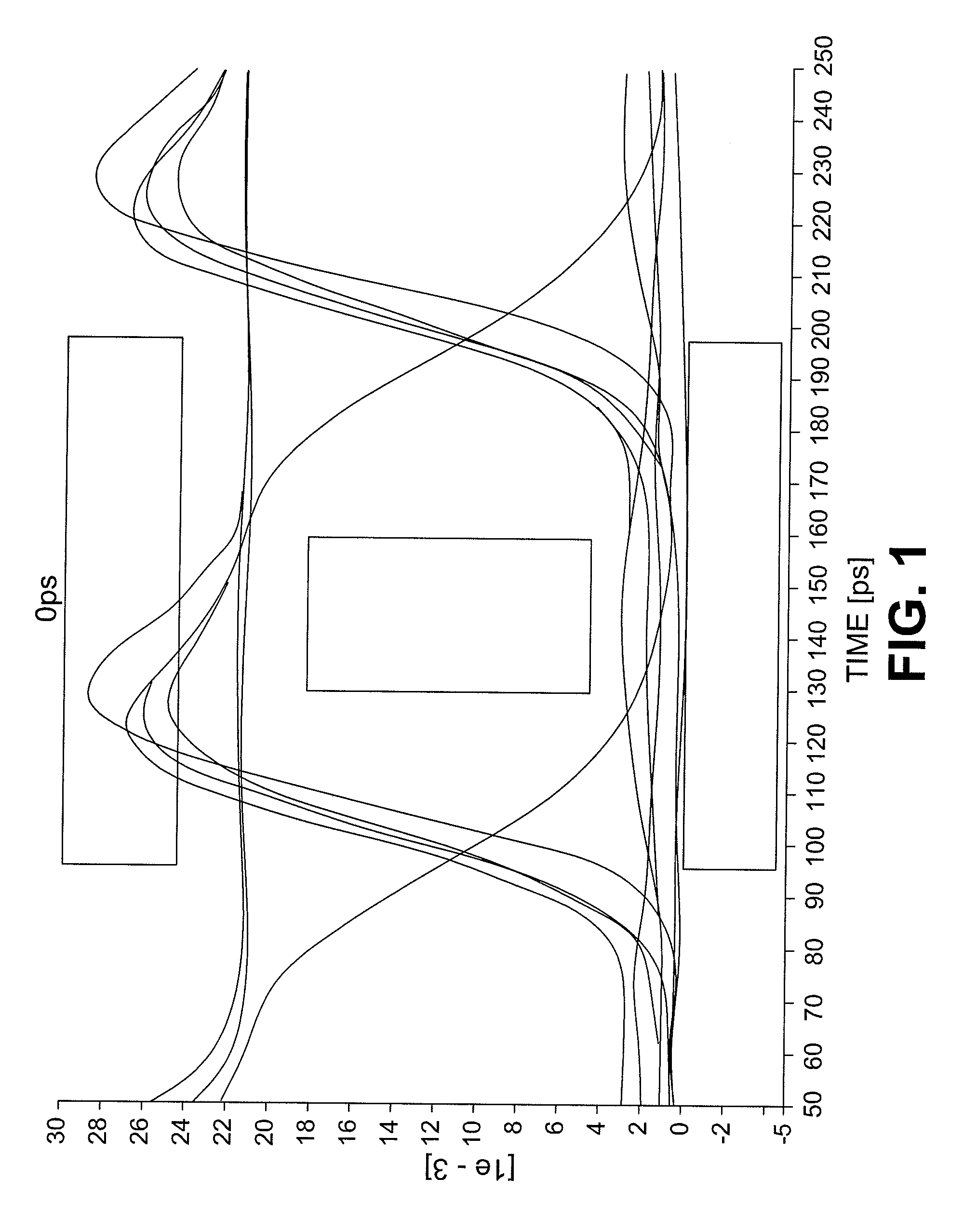Directly-modulated diode lasers with reduced overshoot
a diode laser and direct modulation technology, applied in the field of optical communication, can solve the problems of reducing the usefulness of a dml, reducing the efficiency of a laser, and difficult to remove all cycles, so as to reduce the overshoot on the 0 to 1 transition, improve performance, and improve performance.
- Summary
- Abstract
- Description
- Claims
- Application Information
AI Technical Summary
Benefits of technology
Problems solved by technology
Method used
Image
Examples
Embodiment Construction
[0053]It is important to achieve high quality, low distortion amplitude modulation as well as low laser chirp when using directly modulated lasers in digital high bit rate dispersion limited systems. In such systems a low distortion amplitude waveform will produce good receiver sensitivity at low fibre reaches while the presence of low chirp will help sustain the quality of the amplitude waveform as it propagates down the fibre and experiences chromatic dispersion. In loss limited applications (where chromatic dispersion is negligible) the most important attributes of the directly modulated laser are the quality of the amplitude waveform and the launched power into the fibre. For loss limited digital applications chirp reduction, or modulated frequency excursion reduction, is not particularly important. In accordance with embodiments of the invention, a multi-section direct modulation optoelectronic device is driven in such a way as to provide improved quality of amplitude modulatio...
PUM
 Login to View More
Login to View More Abstract
Description
Claims
Application Information
 Login to View More
Login to View More - R&D
- Intellectual Property
- Life Sciences
- Materials
- Tech Scout
- Unparalleled Data Quality
- Higher Quality Content
- 60% Fewer Hallucinations
Browse by: Latest US Patents, China's latest patents, Technical Efficacy Thesaurus, Application Domain, Technology Topic, Popular Technical Reports.
© 2025 PatSnap. All rights reserved.Legal|Privacy policy|Modern Slavery Act Transparency Statement|Sitemap|About US| Contact US: help@patsnap.com



